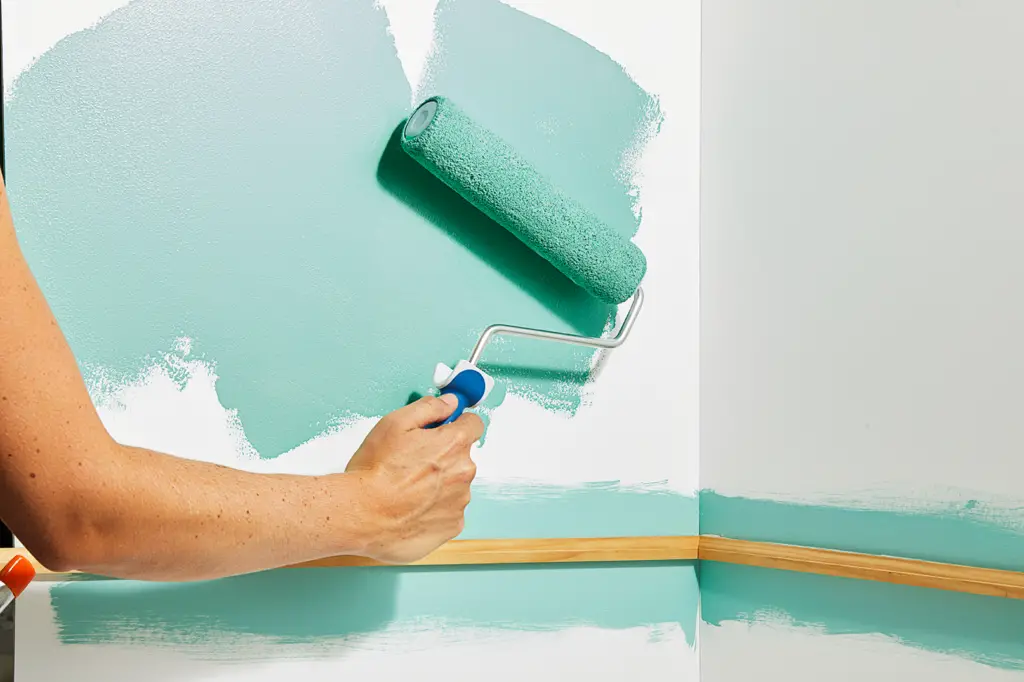Painting a room can refresh and transform your space, but understanding the time commitment involved is essential for planning. Several factors influence the duration of a painting project, including the size of the room, the condition of the walls, the number of coats required, and the type of paint used.
Factors Affecting Painting Time
Room Size: Naturally, the larger the room, the more time it will take to paint. A small room might be completed in a few hours, while a large room could take a full day or more.
Preparation Work: Preparing the room for painting is often the most time-consuming part of the process. This includes moving furniture, covering floors, cleaning walls, fixing imperfections, taping edges, and priming. Depending on the room’s condition, preparation can take anywhere from an hour to several hours.
Number of Coats: The number of paint coats needed significantly impacts the total painting time. Some colors and finishes might require more than two coats to achieve a uniform appearance.
Drying Time: Paint needs time to dry between coats. The drying time can vary based on the type of paint (oil-based vs. water-based), humidity, and temperature. Typically, latex paints dry faster than oil-based paints.
Type of Paint: High-quality paints might cover more efficiently and dry faster, potentially reducing the overall project time.
Typical Timeframes
Small Room (e.g., a bathroom): Preparing and painting a small room can take anywhere from 4 to 6 hours.
Medium Room (e.g., a bedroom): For a medium-sized room, expect to spend about 5 to 8 hours.
Large Room (e.g., a living room): Large rooms can require 8 to 10 hours or more, depending on the factors mentioned above.
Steps Involved in Painting a Room
Preparation: Remove or cover furniture, cover floors with drop cloths, clean and repair walls, tape off trim and windows, and apply primer if needed.
Painting: Apply the first coat of paint, starting with the ceiling, followed by the walls. Use brushes for edges and corners and rollers for large wall areas.
Drying and Recoating: Allow the paint to dry as recommended by the manufacturer before applying subsequent coats.
Cleanup and Touch-ups: Remove tapes, touch up any missed spots, clean brushes and rollers, and move furniture back into place.
Tips for Efficient Painting
Use Quality Tools: High-quality brushes, rollers, and paints can save time and give a better finish.
Plan Your Approach: Have a clear plan for the order in which you will paint the room.
Enlist Help: Having an extra pair of hands can significantly speed up the process.
The time it takes to paint a room varies widely based on many factors. For a typical room, set aside at least a full day to account for preparation, painting, drying, and cleanup. Proper planning and preparation can help ensure that the painting process is as efficient and smooth as possible.
Estimating Time Accurately
To estimate the time needed to paint a room more accurately, consider these detailed factors:
Wall Height and Accessibility: Higher walls or those with difficult access can add significant time to a painting project, as you might need ladders or scaffolding.
Condition of the Walls: If the walls require extensive repairs such as patching holes, sanding rough areas, or sealing stains, this will add to the preparation time.
Complexity of the Space: Rooms with lots of windows, doors, built-ins, or intricate trim work require more detailed taping and brush work, which can slow down the process.
Time-Saving Techniques
To maximize efficiency during your painting project, consider the following tips:
All-in-One Paint and Primer: Using a combined primer and paint product can save time by reducing the number of coats needed.
Roller Extensions: For high walls and ceilings, use roller extensions to avoid the time spent moving and climbing ladders.
Batch Prep Work: Complete all preparation steps at once before beginning to paint to streamline the process.
Professional vs. DIY Painting
While DIY painting can be economical, hiring professionals can significantly reduce the time it takes to complete the project. Professional painters have the experience, tools, and techniques to get the job done efficiently. Here’s how professionals might save time:
Teamwork: Professionals often work in teams, which can expedite the painting process.
Expert Techniques: Experienced painters know how to apply paint quickly and evenly, reducing the time needed for touch-ups.
Professional Equipment: Professionals use high-grade equipment that can cover larger areas more evenly and quickly than standard consumer-grade tools.
Scheduling Considerations
When planning a painting project, consider the impact of weather and season, especially if you’re using oil-based paints or if the room has poor ventilation. Humidity and temperature can affect drying times, potentially lengthening the project duration.
Painting a room is a manageable project that can dramatically change the look and feel of your space. Whether you choose to DIY or hire professionals, understanding the time involved is crucial for a successful outcome. By considering all relevant factors and using efficient techniques, you can ensure that your painting project is completed smoothly and within a reasonable timeframe.







